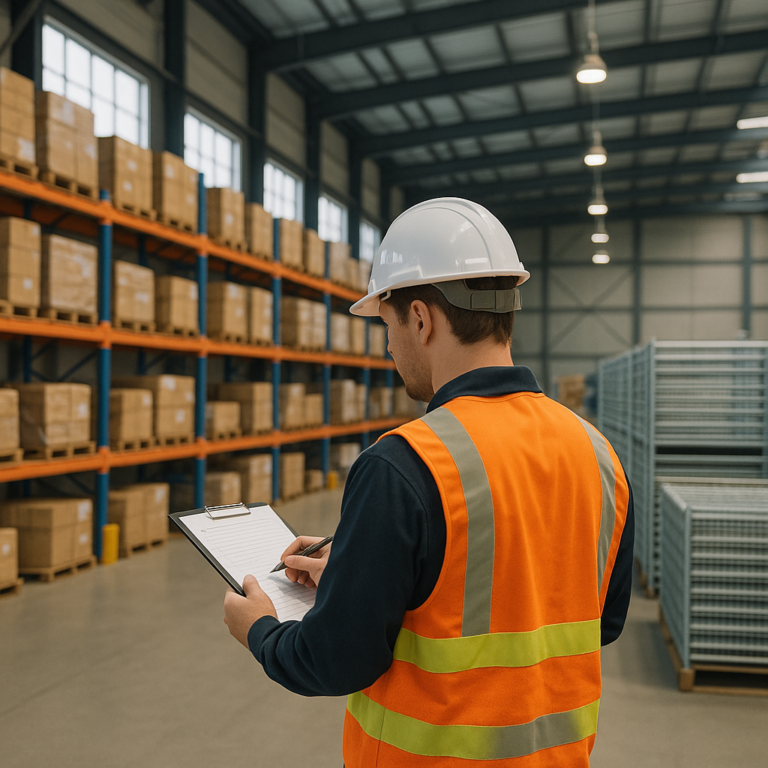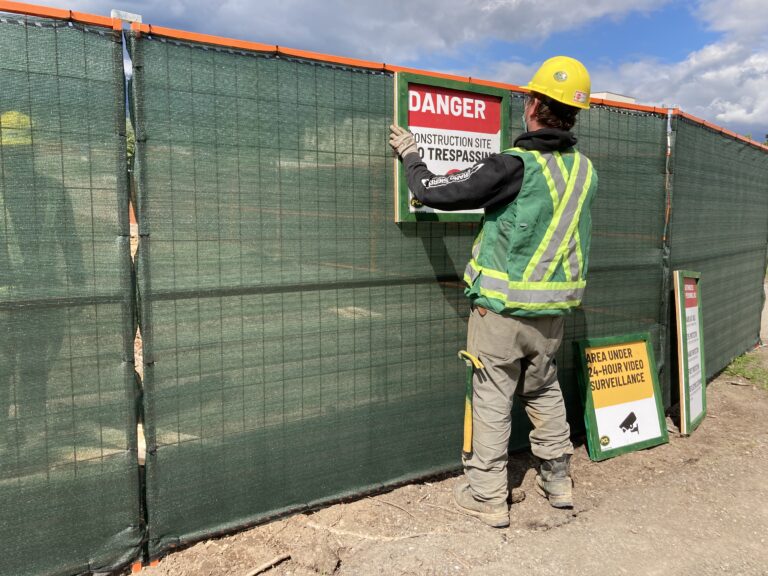If you’ve ever walked past a construction site in Vancouver, Toronto, or Quebec, you’ve likely seen security fencing surrounding the area. While most people think of it simply as a way to keep unauthorized people out, temporary construction fencing serves a much broader purpose. This blog dives deeper into why temporary fences are essential for site security, and how they play a crucial role in keeping construction projects safe, compliant, and on track.
Why is Temporary Fencing So Important for Security?
When it comes to construction sites, safety and security are paramount. According to the Occupational Safety and Health Administration (OSHA), there are strict regulations for ensuring that construction sites are safe for workers and the public. Temporary fencing plays an integral part in meeting these standards, and here’s why.
1. Ensuring Safety on Construction Sites
Construction sites are filled with hazards—heavy machinery, power tools, exposed wires, and unfinished structures can pose serious risks. Temporary fencing helps contain these hazards, keeping workers and pedestrians safe from potential injuries. By preventing unauthorized access, you significantly reduce the chance of accidents occurring.
As stated by OSHA regulations, sites must include clear “means of egress,” or exits, to allow workers to evacuate quickly in an emergency. This includes ensuring that your fencing has distinguishable gates that are not locked or obstructed during work hours. This is where fence gates and wheel assemblies come in—ensuring easy access while maintaining security.
2. Security Against Theft and Vandalism
One of the biggest concerns on any construction site is the theft of materials and equipment. Expensive machinery and building materials are often left unattended at night, making them easy targets for thieves. Temporary security fencing serves as a first line of defense, deterring would-be criminals by restricting access to the site.
In cities like Toronto or Vancouver, construction theft can delay projects and inflate budgets, making it crucial to secure your site properly. Privacy mesh panels can also be added to fence panels to provide added protection, preventing curious onlookers from gaining access or spying on valuable equipment.
3. Compliance with Local and Federal Regulations
Whether you’re in Vancouver, Quebec, or Toronto, most cities and municipalities require construction sites to be properly secured. In fact, OSHA and local ordinances mandate the use of fencing to protect workers and the public. The rules vary depending on the type of construction, but generally, fencing must be at least six feet tall for residential projects and six feet (sometimes 8 feet) for commercial or industrial sites. This is where temporary fence panels come in—providing an affordable, quick solution to meet these height requirements without the need for permanent installations.
By installing temporary fencing, you’re ensuring that your site is in compliance with both local regulations and federal standards, avoiding unnecessary fines and ensuring a smooth, uninterrupted project timeline.
4. Preventing Debris and Containing Hazardous Materials
A major concern on any construction site is preventing debris from spilling out into surrounding areas. This is especially critical if your site is near busy roads or public areas, such as airports or residential neighborhoods. Loose debris can cause accidents, injuries, or damage to nearby property. Temporary fencing helps contain these risks by keeping construction debris contained within the perimeter, avoiding costly cleanup and safety hazards.
5. Protecting Your Progress
Construction sites are dynamic—work is done daily, materials are moved, and equipment is used. But as your project progresses, it’s important to ensure that progress is protected. Temporary fencing not only secures the site overnight but also safeguards the work you’ve already completed from vandalism or unauthorized access. After all, protecting your work ensures that you stay on schedule—and within budget.
Types of Temporary Fencing for Construction Sites
Not all construction sites are the same, and as a result, the type of fencing panels you use should depend on the nature of the project.
- Residential Construction: For smaller, residential sites, OSHA requires fencing that is at least four feet tall. Lightweight temporary fence panels made from materials like galvanized steel are often sufficient to meet these requirements. However, six feet tall is typically used.
- Commercial and Industrial Construction: For larger, high-security sites, such as those in urban areas like Toronto or Quebec, fencing must be at least six feet tall. These stronger fence panels help prevent theft, ensure safety, and comply with local ordinances. In some instances, eight feet tall fence panels are required.
Additionally, some sites may require extra features like security clamps or wind braces or other safety attachments depending on the risks involved, such as working with hazardous materials or near active roadways.
Benefits of Temporary Fencing on Construction Sites
- Safety: By containing hazards, temporary fencing keeps both workers and pedestrians safe from potential accidents.
- Security: Temporary fencing helps deter theft, vandalism, and unauthorized access, which is crucial for protecting materials and equipment.
- Compliance: Ensures your project meets local and federal regulations, preventing fines and legal issues.
- Privacy: With the option to add mesh screens, temporary fencing enhances privacy, prevents prying eyes, and secures sensitive areas.
- Cost-Effective: Temporary fencing offers an affordable, flexible solution compared to building permanent barriers, which can be both time-consuming and expensive.
At the end of the day, temporary construction fencing is much more than just a boundary marker. It’s a crucial component in keeping your site safe, secure, and compliant with local and federal regulations. Whether you’re working in the heart of Vancouver, on a major project in Quebec, or a new build in Toronto, temporary fencing offers peace of mind and protection for your workers, equipment, and the public. So, before you start your next project, make sure to invest in quality construction fencing that meets all your security and safety needs. It’s a simple yet highly effective step in keeping your project on track and your crew safe.


